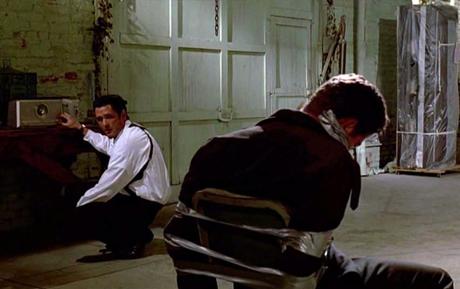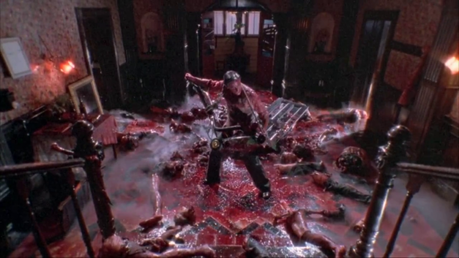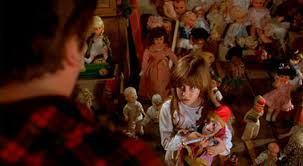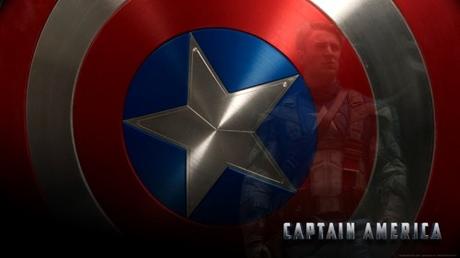When Re-Animator director Stuart Gordon arrived in Spain for the Sitges Film Festival in 1992, he'd already left exploitation filmmaking behind him. Heck, he had an office on the Disney lot and a producing credit on 1989's hugely successful family film Honey, I Shrunk the Kids. The sequel, Honey, I Blew Up the Kids, which he was far less involved with, was still in theaters. Yet, here was Gordon ready to sit on a film festival jury alongside Ellen Burstyn and Stuart Freeborn and judge the latest and greatest in horror and fantasy, which has been the Sitges Festival's specialty since 1968.
There were two films in competition that year which left Gordon stunned and newly convinced he'd made the right choice to find a new course for his career after spending a half-decade chasing Re-Animator 's success:

The first was Quentin Tarantino's Reservoir Dogs, which eventually won the Festival's Best Film price (as Re-Animator had 7 years earlier). The film's infamous torture scene seemed so real and upsetting it actually caused Wes "Last House on the Left" Craven to leave halfway through the screening.

The second was Peter Jackson's Dead Alive, a cartoonish orgy of zombie violence seemingly unrivaled in horror history outside of maybe a Fulci film. "I had always thought Re-Animator held the all-time record for blood spilling," Gordon later explained. "We used thirty gallons of fake blood. So I asked Peter how much blood he had used, and the answer was three thousand gallons."
And there it was, the future of genre filmmaking, at least as Gordon saw it: you either turn more toward realism to truly upset audiences by giving them believable horror or you continue upping the splatter arms race and see just how many gallons of blood it will take to still stun audiences. Gordon wanted no part of either option. He wanted to at least try and keep making family films. That, in the long run, didn't work out, but how did the man who made his name having a disembodied zombie head attempt to give, well, head to a completely naked, shrieking Barbara Crampton ever end up with an office at the intersection of Dopey Drive and Mickey Avenue?
Here's how it happened
The short version: He had kids.
No, seriously, that's it. So often in film history, a director, actor, or producer's sudden change in direction simply comes down to, "I wanted to finally make something my kids could watch." That impulse is what led Gordon to Honey, I Shrunk the Kids.
When he made Re-Animator, his directing debut after years spent running Chicago's Organic Theater Company, Gordon already had two young daughters at home. His wife Carolyn Purdy-Gordon, who has a small part in the film as Bruce Abbott's hospital supervisor, actually had to fly back home to Chicago to take care of the kids.
Two years later, when Gordon had to travel to Europe to make Dolls (as well as the Lovecraft adaptation From Beyond) one of his daughters visited the set, saw a room full of dolls, and thought, "Which one of these can I take home with me?" Nevermind that in the plot of the film they are evil dolls, spoiler, miniaturized versions of tourists unlucky enough to happen upon a demented old couple's countryside home. Having already zeroed in on the doll she wanted, she asked, "Dad? Are all of these dolls bad?" When he confirmed her suspicion, she hopefully offered, "Even this one here, with the white buttons?"

It wasn't. Obviously. Gordon gave her the doll. She held on to it for years. The film managed just fine without it.
The experience stuck with him, though. When your daughter asks about a cute doll on your film set, should she really have to ask, "Is that one evil?" When his family subsequently grew from two daughters to three, he pursued working at Disney. Not surprisingly, the next title in his filmography after Dolls is Honey, I Shrunk the Kids, and that transition started with his old Re-Animator producer Brian Yuzna.
The concept"I remember really clearly how it all began. I was with Brian Yuzna in his backyard, and he was really upset because his kids had gone to see a movie called The Journey of Natty Gann, which was directed by a neighbor (Jeremy Kagan) whose kids went to the same school as they did. The director's kids invited the entire class to come to an advance screening, and Brian's kids came home afterward and said, 'Dad, how come we never get to see any of your movies,' which knocked his nose a little out of joint. That said, Brian will actually show his kids anything. He had his son sitting in on the dailies for Re-Animator, which I couldn't have imagined doing with my daughters. My eldest daughter loves horror films, but my middle daughter, the one who wanted the doll with the white buttons, is terrified by them, and the slightest little thing will set her off and give her nightmares. Brian's kids seem to be fine; they aren't axe-murders, at least not as far as I now...But anyway, his movies weren't the kind of thing you'd invite a whole class full of other people's children to, and that was what got to Brian.
The above quotes is excerpted from Gordon's early 90s interview in Maitland McDonagh's Filmmaking on the Fringe: The Good, The Bad, and the Deviant Directors. Unless otherwise noted, that's where all of the subsequent quotes come from as well.
So we started talking about it, saying, "Why don't we come up with an idea for a movie our kids could see?" And we started talking about little kids playing in the backyard, because that's where we were having this discussion. And all of a sudden this idea kind of came together, about kids who get shrunk so they're teeny-tiny and the adventures they have trying to get across the yeard, and we brought it over to Disney.
It's hard to remember this now given Disney's current blob-like swallowing of the entire film indusry, but back in those days the Mouse House was in dire straits. As Gordon observed in his 2016 Talk House column "My Adventures with Katzenberg":
The Disney name was so tarnished that there was even talk of changing its name to Touchstone, and abandoning the family films that were then deemed to be box-office poison. This included discontinuing the animated films after their most recent effort The Black Cauldron had cratered. But Roy E. Disney, who had hired Eisner, insisted that they continue making the cartoons that put the studio on the map and retain the Disney moniker.
"If you want the cartoons so badly," Eisner had reportedly told Roy, "then you do them." But the animators were thrown out of the Animation Building to make room for the likes of Bette Midler and Richard Dreyfuss who starred in the lower budgeted comedies that Eisner felt could keep the studio alive.
Into that mess walks the guys who made Re-Animator, ready to pitch an idea about a scientist who accidentally shrinks his kids.
The PitchDolls screenwriter Ed Naha's was recruited to convert their idea into a script, and his original treatment was 70 pages long; Disney, which was first turned onto the project through a junior executive named David Hoberman, offered back over 100 pages worth of notes.
Several months and countless rewrites passed before the trio were finally invivited in to meet Jeffrey Katzenberg, who had been marking up their scripts with rather blunt criticisms. As Gordon recalls at Talk House, "'Welcome to the first production meeting for Teenie Weenies,' Katzenberg began. Brian Yuzna and I looked at each other. Were we actually in production? 'Clearly we need to find a new title,' he continued."
The TitleIt's adorable they ever thought The Teenies Weenies was a title that would stick. Katzenberg immediately cut to the heart of he problem, beginning the meeting with the following joke: " Teenie Weenies - is the title autobiographical?" Gordon offered an alt-title option - The Itsy-Bitsies - which was similarly rejected. Somebody in the marketing department actually came up with Honey, I Shrunk the Kids, which was as perfect a Katzenberg title as you could find.
Again, Gordon looking back on it in 2016: "Jeffrey likes titles that tell the audience what the movie is about. Not everyone liked the new title (including me) and I remember one producer reminding Jeffrey that Rain Man wasn't called My Retarded Brother. But of course he was proven right about Honey, as the title has become a part of our national vernacular and the set up to a million jokes."
The NosebleedSettling on the right title was but the first of countless battles. Breakfast meetings were scheduled for 7AM at the start of production; by the end, those meetings started at 5 AM thanks to Katzenberg's pledge to not waste a single minute every day. Anyone who complained about working on Saturdays was simply told not to worry about coming on Sunday either because they were fired. Katzenberg's notes on the script were often insane, like demanding the shrunken kids encounter a pile of dog shit in the back yard the size of the Beverly Center. But they were also sometimes helpful, with his suggestion to have the kids trapped in a shopping cart which is being bombarded with grocery items (as a means for budget-ligthening production placement opportunities) directly inspiring Gordon to create the film's most iconic scene:
But the gruelling schedule and constant back-and-forth took its toll on Gordon:
The movie was going to happen, and I was going to direct it. We went into pre-production and planned it all out, and worked with the designers, found a director of photography, got all the effects people on board. And about two weeks before we were going to start shooting, I got sick and had to drop out.
By "got sick" he means he suffered a rather horrific-sounding nosebleed during a production meeting. A doctor told him the bleed was caused by a combination of stress, Katzenberg's iron-fisted leadership style finally getting to him, and high blood pressure. The movie Gordon only ever wanted to make to give his daughters something they could watch was going to kill him. Literally. The doctor actually used the phrase "you'll die if you make this movie." That turned the decision into a no-brainer: Gordon had to back away and get healthy rather than risk leaving his kids without a father.
The ReplacementI was replaced by Joe Johnston, who pretty much inherited all this work I had done. He didn't really have much breathing room; they wanted to make the schedule, so he took all the planning we had done and made the movie. And I'm glad he was very faithful to our concepts; there were a few departures, but for the most part it was really our movie. And then the movie did extremely well.
Honey, I Shrunk the Kids was actually Johnston's directorial debut after spending a decade working in visual effects at LucasFilm. Honey's success launched him into a decade of full of family-friendly entertainment like The Rocketeer (1991), Jumanji (1995), and October Sky (1999). Now, he's most known for directing Captain America: The First Avenger.

Gordon was happy with Johnston's work on Honey, but it was still a bittersweet pill to swallow:
High blood pressure is curable, so I had to get healthy. In a way the incident was a good thing, because it made me deal with my health. But i'd be lying if I denied that it was also a huge disappointment, especially when Honey, I Shrunk the Kids became this blockbuster. Still, ultimately, I can't complain; it's done great things for me.
What do you mean he "saved the Disney family film"?
At the time Honey, I Shrunk the Kids was made, calling something a family film was kind of the kiss of death. Anything called a family film was nowhere; even Disney stopped making them. As a matter of fact, Honey, I Shrunk the Kids was the first live-action Disney, as opposed to Touchstone, film that had been made in ten years. I thought that was great.
Gordon's reward was an office on the Disney lot, fulfilling a childhood dream, "Walt Disney himself always used to say that they didn't make kids' movies, they made family films. That was a big production in his mind: that Disney made movies that had things in them that everyone could enjoy together, the whole family. So he didn't want the movies just to be kiddie pablum."
Sadly, there is no Joe Johnston-like "and then he made a bunch of family films we all love" postscript to this story. Gordon's deal with Disney proved fruitless (various projects worked on went unproduced), and his filmography returned to sci-fi ( Space Truckers) and horror ( The Pit and the Pendulum, Dagon, Masters of Horror), though never to the extremes of Re-Animator. But at least he walked away from it with one movie to his name which he could happily watch with his kids.
Source: Filmmaking on the Fringe, Stuart Gordon's 2016 TalkHouse Column "My Adventures with Jeffrey Katzenberg"

